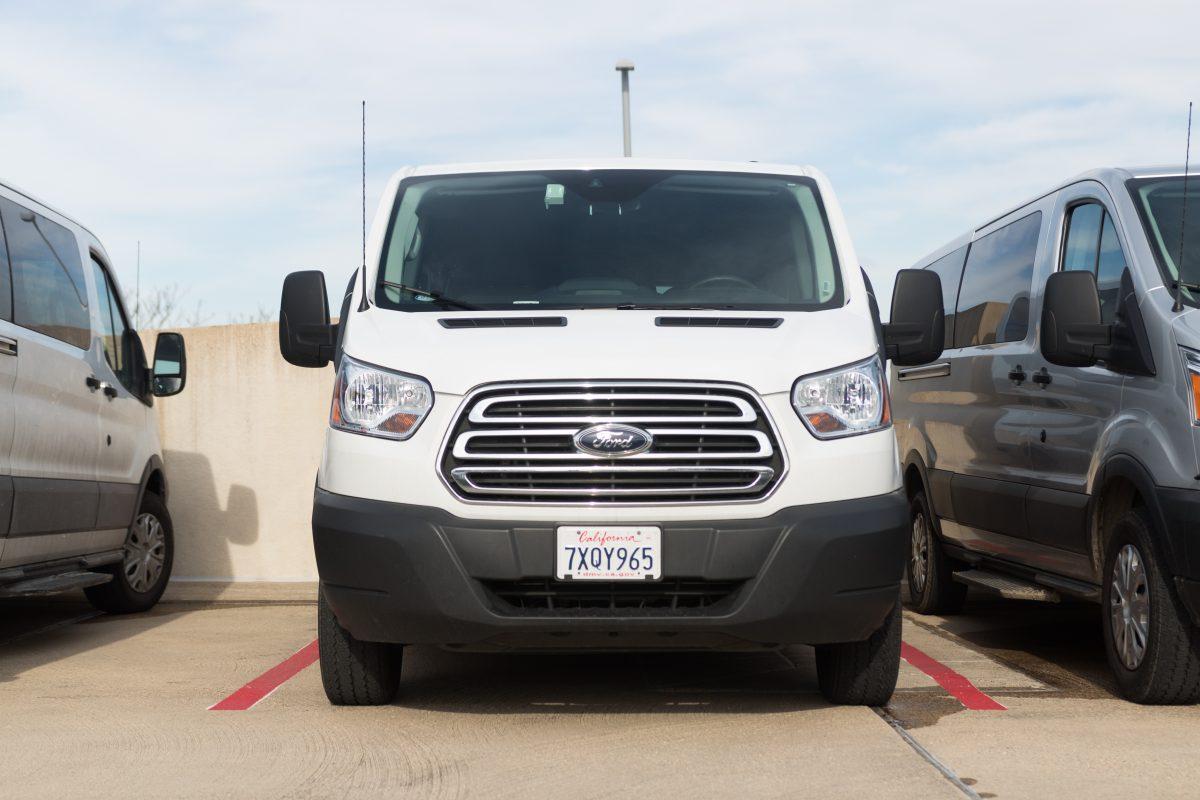Certification for driving St. Joe’s vans comes with difficulties
Calley Maloney ’18, like most students, needed to complete a defensive driver training course before being allowed to drive one of the university’s vans, yet after she felt underprepared.
Over half of the students at St. Joe’s are certified to drive university vehicles, which are used for approved programs involving outreach, service, education and athletics, according to Michael Boykin, assistant director of Public Safety.
For students to become certified to drive a university vehicle, they must complete a 70-minute training course consisting of review of the transportation policy, a video, a lecture and a written or oral test. The training does not require students to get behind the wheel of a vehicle. But for the students, that training is just not enough.
Students who have completed the training program expressed frustration over the training. Their main concern is watching a video is not adequate. Instead, they would benefit from experience behind the wheel.
Maloney was trained to be a backup driver in case of emergencies for the 2017 Appalachian Experience trip, which sees vans full to capacity.
“I think it would be helpful to go out with a couple people from the class with a public safety officer and just drive the 12-passenger van around St. Joe’s, just to get used to the different gear shifts and stuff,” Maloney said. “For safety reasons this is probably better. I know a lot of people who have their driver’s license but that doesn’t mean that they know how to drive.”
Danielle Prioleau ’18, who trained her sophomore year, agreed experience driving the 12-passenger van would be beneficial.
“It weighs a lot more so you have to stop faster, and when you turn the whole van will move faster because it’s heavier,” Prioleau said. “Just knowing that you have people in your car who you don’t necessarily know makes it nerve-wracking.”
Katherine Long ’18, who was trained her freshman year and then again last spring when the two-year certification expired, would have liked to have driven the van for the first time with an instructor.
“Personally, that would have helped me feel less anxious when I had to pick up my participants on my first day driving the van,” Long said.
Stacey Sottung, associate director of student leadership and activities and one of the defensive driver training course instructors, agreed the current training is not beneficial.
“The most effective teaching method would be to teach every student how to drive a 12-passenger van,” Sottung said. “The most effective way would be to teach people hands-on.”
Yet Sottung also acknowledged it would be unrealistic to get every student trained behind the wheel.
“I’m not sure if we are in a place as a university to have an effective teaching method,” Sottung said. “Where’s the time? That’s not feasible or realistic.”
Boykin concurred getting students behind the wheel is a time management issue.
“Unfortunately, there is no way to have enough time in order to get everybody that’s trained behind the wheel of a vehicle, meaning the 12-passenger van,” Boykin said. “I don’t think the university would be interested in hiring a full-time driving instructor for the training.”
For students who do express fear of getting behind the wheel of a 12-passenger van, Boykin said accommodations could be made for those students.
“If there is a need, then we could possibly see about starting a program to get those people who have the concerns in driving the larger vehicles just some hands-on time behind the wheel,” Boykin said. “That would be great.”
St. Joe’s recently switched insurance groups from Hanover Insurance Group to PMA Insurance Group, Boykin said. Because of the switch, there is always a possibility that PMA could review the program and make changes to it, he said.
Despite students feeling unprepared behind the wheel of a vehicle, Boykin said he believes the training method does suffice, in part because accident statistics bear that out. While he was not authorized to share a copy of the statistics from the insurance provider on the number of accidents involving students and university vehicles, he said that there are fewer than before.
“We have not had any major incidents occur where someone was seriously hurt at the fault of one of our drivers,” Boykin said. “We’ve come a long way because one of the things we do get is information from our insurance provider, and we’ve been trending down for the past five years.”














































